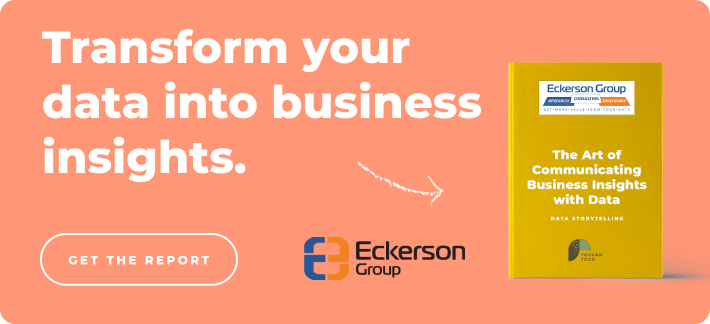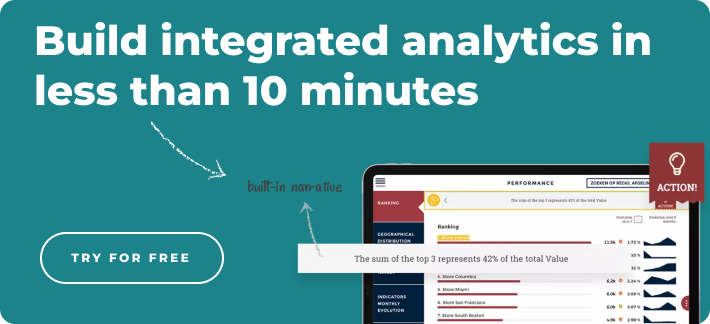Integrated analytics - What does it mean?
Integrated analytics means fusing your data insights solution into everyday workflows and applications, helping employees and customers make smarter decisions.
Business intelligence can be delivered from multiple data sources using an integrated analytics platform. With this system, users can see up-to-the-minute data, forecast revenue, predict trends, and evaluate marketing strategies.
Smart companies recognize the importance of making decisions based on insights from their data, so they incorporate data analytics into the daily workflow of their employees. In addition, integrated analytics are used to synthesize these data insights into products and apps that are targeted at customers (also known as embedded analytics), increasing stickiness and generating new revenue. The ability to track how fast a person runs a mile is fine. However, what about an application that is able to tell the user how they performed compared to everyone else running the same route, or their time compared with others based on their gender, age, and weight? It is this feature that will keep users returning to the app if only to keep attempting to achieve a first-place rating.
Benefits and Importance of Integrated Analytics
Actionable insights are difficult to uncover when viewing charts or Excel spreadsheets. In data analysis, insights are not obvious, such as the following: “Target these markets to solve your shipping issues! An analyst's job is to reveal these insights through the slicing and dicing of data and digging deep into it for those insights. Integrated analytics provides these insights to those of us who are not professional data scientists in an easy-to-understand format.
Integrating analytics ensures that employees at all levels have access to the same information and performance indicators. This allows everyone to keep track of relevant projects, campaigns, and initiatives, making sure that metrics are consistent and everyone is on the same page. An important aspect of this strategy is that the information is integrated into everyday business applications, where employees already conduct their work. By integrating analytics with existing workflows, organizations can gain insights, improve access to information, and make better decisions.
Through integrated analytics, teamwork and collaboration can be improved. It is too common for people in an office environment to work in silos, without considering the objectives of the other departments, especially when they are working remotely. Integrating data visualizations with integrated analytics can help each individual track how their work contributes to the organization's goals, zoom out periodically, and look at the broader perspective.
Let’s look at who, exactly, in your organization can benefit the most from using integrated analytics and some of the methods that can make your department “most likely to succeed.”
Sales Department. Digitally transformed companies will likely have transformed their sales funnels as well. A variety of touchpoints can be used to collect data from customers across multiple channels. By using analytics, organizations can identify why potential customers are dropping out and how to optimize the journey. Integrated analytics platforms like Toucan are particularly useful here. With Guided analytics, you will be able to explore data more deeply at any point by highlighting anomalies and points of interest. You don't need any technical skills!
C-suite. Executives know that advanced analytics will help them sharpen their competitive edge in the marketplace when used to inform their business strategies. In addition, it can increase efficiency, reduce excess costs, and boost in-house productivity.
Human Resources. The number of HR teams using integrated analytics has increased dramatically over the past two years. To keep their companies stronger and increase employee engagement, they utilize a wide array of data from surveys, recruitment platforms, and benefits statistics.
Other departments. IT, marketing, finance, and more, can also benefit from analytics integration. In order to drive value, you can use BI tools like Toucan to eliminate the need for an extended deployment process for seamlessly integrated analytics.



